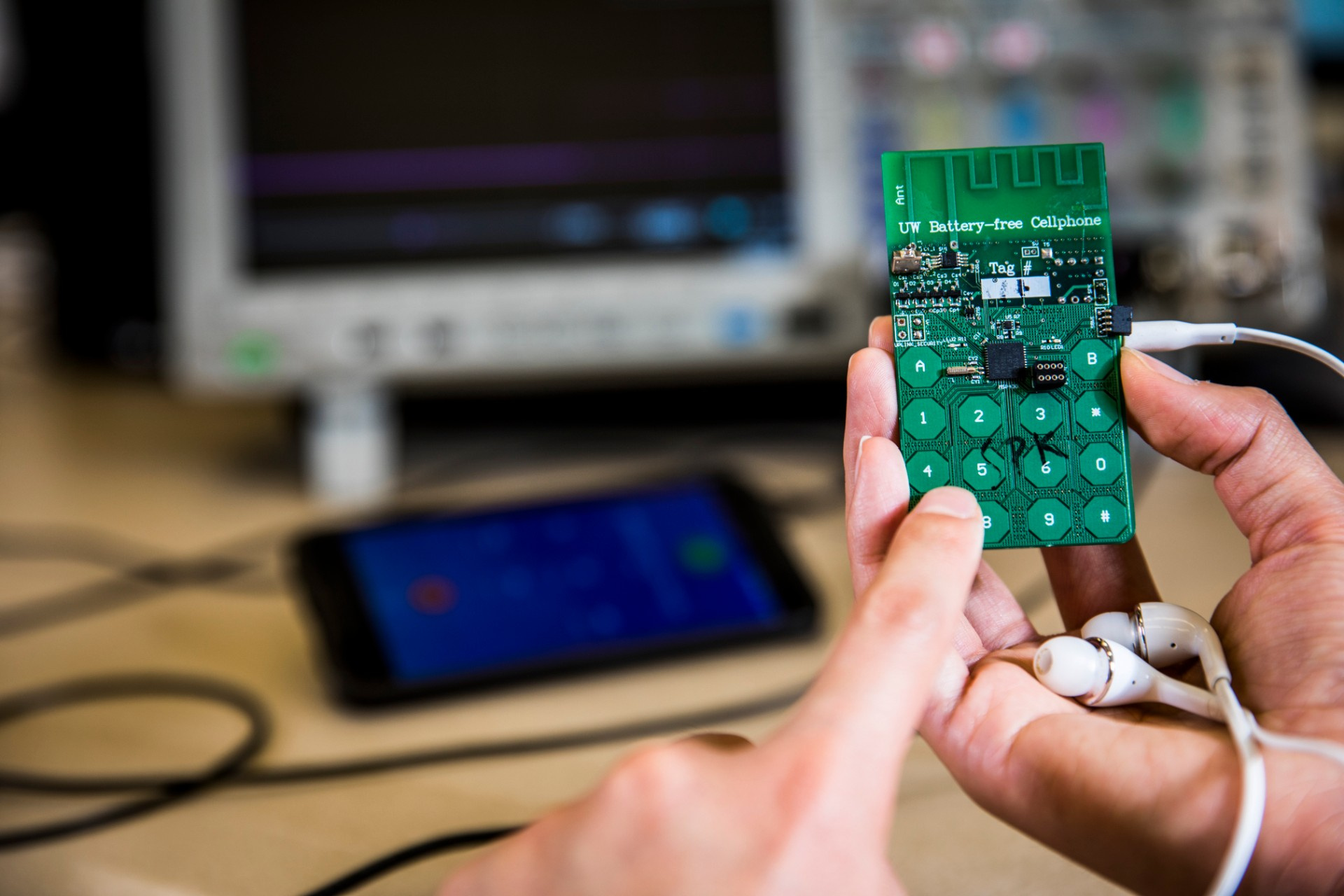The world's first mobile phone without batteries works on the model of the Soviet spy bug of the 1940s

Engineers from the University of Washington (USA) have developed a cell phone that works without an integrated power source (that is, without a battery). It receives the necessary 3.48 microwatts (maximum) by radio from an auxiliary radio station, which is located at a distance of up to 9.4 m. If there is a light source, photocells give additional energy, due to which you can move away from the base station by 15.2 m
Researchers believe that their work will be the first step to creating a full-fledged mobile phone without batteries, which can work even in the absence of an auxiliary radio station. After all, in the urban space there are already so many radiations that can be turned into electricity.
A group of engineers managed to minimize the power consumption of a mobile phone. To do this, they applied a number of innovative solutions. “We built, in our opinion, the world's first functional cell phone that consumes almost no energy,” said Shyam Gollakota, an associate professor at the School of Computer Science and Engineering at Washington University, co-author of the scientific work. “To achieve such a very, very small power consumption so that your phone could receive energy from the environment, we had to fundamentally rethink the design principles of such devices.”
It should be noted that now there are many different electronic devices that do well without batteries, consuming environmental energy - radio waves, sunlight, vibrations, human body heat (temperature difference), etc. But usually this is low-power electronics, such as various sensors that work sporadically. That is, they accumulate energy for a long time (a minute or two), and then “wake up” and do some useful work, after which they again switch to energy storage mode. Talking on a mobile phone should work all the time, so there is a lot more power consumption: “You can't say hello!” And then wait a minute until the phone accumulates enough energy to continue transmission, said Bryce Kellogg, PhD candidate in electrical engineering at Washington University, another co-author of scientific work. - It was the biggest difficulty. With the surrounding radio waves or light, you can usually get in the region from 1 to 10 microwatts, not more. So for a real-time conversation, it was necessary to develop a fundamentally new approach for transmitting and receiving speech. ” And this approach came up. The developers managed to get rid of one of the most voracious processes in the electronic components of a cell phone - analog-to-digital conversion.

There is no ADC chip in the phone. Instead, the phone's antenna is connected to an electret microphone - and its vibrations are converted to changes in the standard analog radio signal for the base station. In the reception mode, signal changes are converted into vibrations of the speaker, and in the transmission mode, mechanical vibrations of the diaphragm with an electrostatic charge on an electret microphone through an RF switch are directly converted into changes in the radio signal of the antenna. This transformation consumes almost no energy.

Scheme of voice transmission (left) and reception (right)
According to experts from IEEE Spectrum , such a structure was partially created following the pattern of a passive wiretapping device installed by Russian intelligence officers at the table of the Embassy of the American Ambassador in Moscow in the 1940s.
The disadvantage of this approach is that the user needs to press a button in order to transfer the phone from receive mode to transfer mode - and vice versa (half duplex). But this disadvantage is offset by a huge reduction in energy consumption.

Base stations for broadcasting a suitable radio signal to “power up” the phone can be integrated into existing WiFi routers, which are already installed in almost every apartment.

The authors proved that it is possible to assemble a telephone from commercially available components, the power consumption of which is calculated by micro-watts. Theoretically, such a phone can actually work without a battery, and without an additional base station, simply collecting energy from the environment. This is enough to transmit voice and data, as well as respond to keyboard input. Under laboratory conditions, engineers were able to make a call via Skype and talk to the caller.
So far this is only the first prototype, but invented energy saving methods can be used in future devices from other manufacturers. After all, if people need some kind of electronic device that always works without batteries, then this is a mobile phone.
In the near future, the developers intend to implement a communication encryption scheme in the “phone without batteries”, increase the distance from the base station, add a display on electronic ink and the ability to broadcast video.
The scientific work was published on July 1, 2017 in the journal Proceedings of the Association for Mobile, Wearable and Ubiquitous Technologies (doi: 10.1145 / 3090090, pdf ).
All Articles